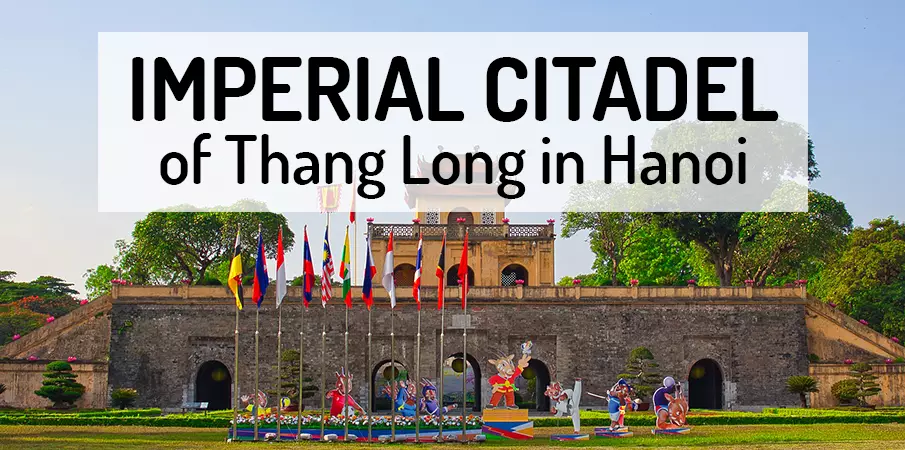
Quick answer: The Imperial Citadel of Thang Long in Hanoi is a historic fortress and political centre for over a millennium. Built in the 11th century on ancient foundations, it evolved under many dynasties and now lies as a UNESCO World Heritage site, with exposed archaeological ruins, a grand flag tower, old gates and palace foundations that tell Vietnam’s long and layered history.
At a glance:
- 📍 Location: Ba Đình District, central Hanoi.
- 🕰️ History: Origin dates back to 11th‑century Lý Dynasty; built upon a 7th‑century fortress.
- 🏯 Main features: Doan Mon Gate, Kinh Thiên Palace foundations, the Hanoi Flag Tower, and Princess Pagoda (Hậu Lâu).
- 🚧 Archaeology: Excavations revealed layers of palaces, wells, roads spanning many dynasties.
- 🛡️ Significance: It was the political heart of Vietnam for nearly 1,300 years.
- 💡 UNESCO: Listed in 2010 for its cultural value and historic continuity.
Last updated in November 2025
Thang Long Imperial Citadel: A Window into Vietnam’s Rich Cultural Heritage.
-
- Thang Long Imperial Citadel is an ancient architectural masterpiece located in the heart of Hanoi, Vietnam. The citadel, which served as the political and cultural center of Vietnam for over 13 centuries, is an important symbol of the country’s rich cultural heritage. The Citadel is located in the heart of Hanoi, about 2.5 km from the Hoan Kiem Lake, on the way to the Ho Chi Minh Mausoleum. You can walk, it is very easy accessible from the city center and you can also see another interesting sites on the way.
History and Significance of Thang Long Imperial Citadel:
-
- The citadel was constructed in the 11th century by the Ly dynasty and was the seat of the Vietnamese monarchy for several centuries. During the reign of the Ly, Tran, Le, and Nguyen dynasties, the citadel underwent several expansions and renovations, making it a grand architectural complex that reflected the country’s power and cultural traditions.
-
- Over the years, the citadel served as the center of political power and cultural activity, where the country’s kings held court, received foreign dignitaries, and conducted important ceremonies. The citadel’s strategic location in the Red River Delta also made it an important hub for trade and commerce.
-
- Despite several periods of war and destruction, the citadel has managed to survive the test of time and remains a valuable testament to Vietnam’s cultural heritage. In 2010, Thang Long Imperial Citadel was recognized as a UNESCO World Heritage site, highlighting its cultural and historical significance.
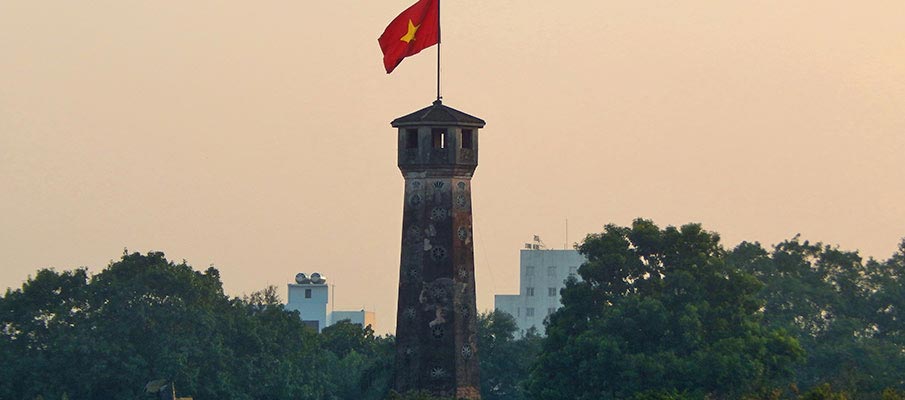
Architecture and Layout of Thang Long Imperial Citadel:
-
- The citadel’s architecture reflects a blend of Chinese and Southeast Asian styles, with its rectangular layout and symmetrical design. The citadel is surrounded by a moat and walls that are over 12 meters high, giving it a grand and imposing appearance.
-
- Inside the citadel, there are several palaces, temples, gardens, and administrative buildings that provide a glimpse into the country’s rich cultural heritage. Some of the notable buildings within the citadel include the Hanoi Flag Tower, the Doan Mon Gate, the Kinh Thien Palace, and the Hau Lau Palace.
-
- The citadel’s layout is also significant, with its axis running from north to south, reflecting the traditional Vietnamese belief in the importance of the north-south axis. The citadel’s layout also follows the principles of feng shui, with the Hoang Thanh (Imperial Citadel) located at the center of the complex.
BOOK a TOUR / ACTIVITY in Hanoi ➜
D67 House and tunnel – underground tunnel of the communist resistance.
-
- The House and tunnel D67 were built in 1967, the tunnel is 68 m long. It is a one-storey building with an area of 605 square metres, about 30m to the back of the Dragon House. The building was made of solid and bulk concrete and steel. The outer wall was 0.60m thick while the dividing wall was 0.28m thick. House with a tunnel is located north of Kien Thien hall. It was the headquarters of the Vietnam People’s Army in 1957-1975. The house is preserved objects and tools the military commanders were using. The tunnel has 3 rooms, there is eg. a table of the General Staff, maps, telephones and other items.

Preservation Efforts and Future of Thang Long Imperial Citadel:
-
- Over the years, the citadel has undergone several renovations and restorations, with the most recent one completed in 2010 to prepare it for its UNESCO World Heritage site recognition. The preservation efforts have focused on restoring the citadel’s original architecture and design while ensuring its structural integrity.
-
- Today, Thang Long Imperial Citadel remains an important cultural and historical landmark in Vietnam, attracting tourists and visitors from all over the world. The citadel’s significance extends beyond its architectural and historical value, as it serves as a symbol of Vietnam’s rich cultural heritage and national identity.
Conclusion:
-
- Thang Long Imperial Citadel in Hanoi is a remarkable testament to Vietnam’s cultural heritage and history. The citadel’s grand architecture, cultural significance, and rich history make it a must-visit destination for tourists and visitors to Vietnam. The ongoing preservation efforts ensure that the citadel’s legacy will continue to be passed down to future generations, providing a window into Vietnam’s rich cultural heritage.
Useful Information about Imperial Citadel of Thang Long:
Location and Opening Hours
-
- Thang Long Imperial Citadel is located in the heart of Hanoi (Old Quarter of Hanoi), Vietnam’s capital city. The citadel’s address is 9 Hoang Dieu, Ba Dinh District, Hanoi. The citadel is open to visitors from Tuesday to Sunday, from 8:00 am to 5:00 pm. The site is closed on Mondays. Right at the Thang Long you can also visit Vietnam Military History Museum.
Entrance Fees
-
- The entrance fee for Thang Long Imperial Citadel is 30,000 VND (approximately 1.5 USD) for adults and 15,000 VND (approximately 0.75 USD) for children under 15 years old. Entry is free for children under six years old.
Guided Tours
-
- Guided tours are available for visitors who wish to learn more about the citadel’s history and architecture. The tours are conducted in English and Vietnamese and are led by knowledgeable guides who provide in-depth information about the citadel’s significance. The cost of a guided tour is typically around 150,000 VND (approximately 7 USD) per person.
Things to See and Do
-
- Thang Long Imperial Citadel offers visitors a range of things to see and do. Some of the highlights of the site include the Hanoi Flag Tower, the Doan Mon Gate, the Kinh Thien Palace, and the Hau Lau Palace. Visitors can also explore the various gardens and courtyards within the citadel, as well as the numerous exhibitions and displays that showcase Vietnam’s cultural heritage.
Tips for Visitors
-
- Wear comfortable shoes and clothing as there is a fair amount of walking involved.
- Bring sunscreen and a hat as the citadel can get quite hot and sunny.
- Be prepared to climb stairs as some of the buildings within the citadel have multiple levels.
- Bring a camera as there are many photo-worthy spots within the citadel.
- Respect the site’s cultural significance by not touching or removing any of the artifacts or displays.
Official Website of Thang Long Citadel: www.hoangthanhthanglong.vn
Photos of the Imperial Citadel of Thang Long:

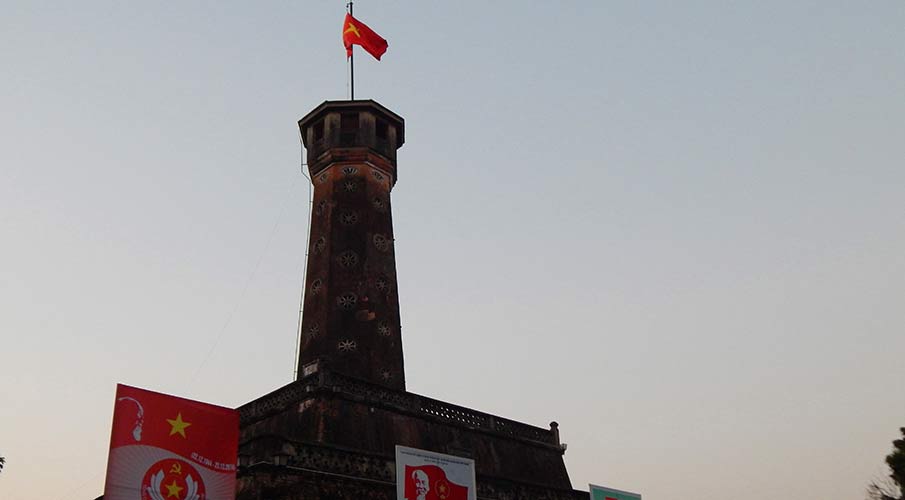


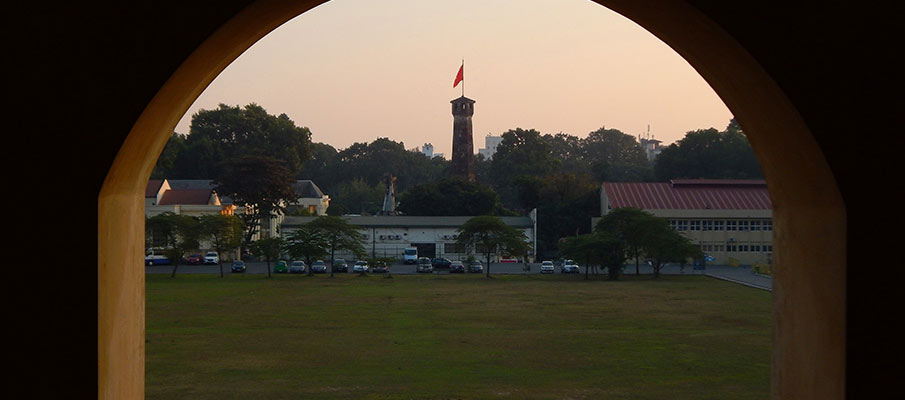
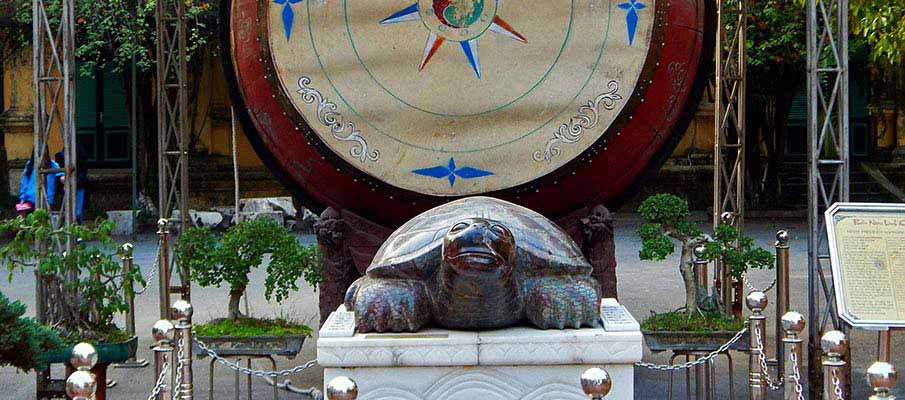

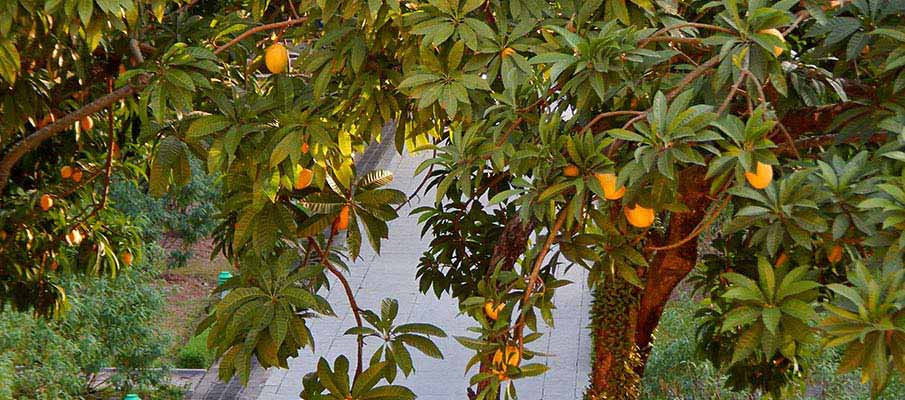
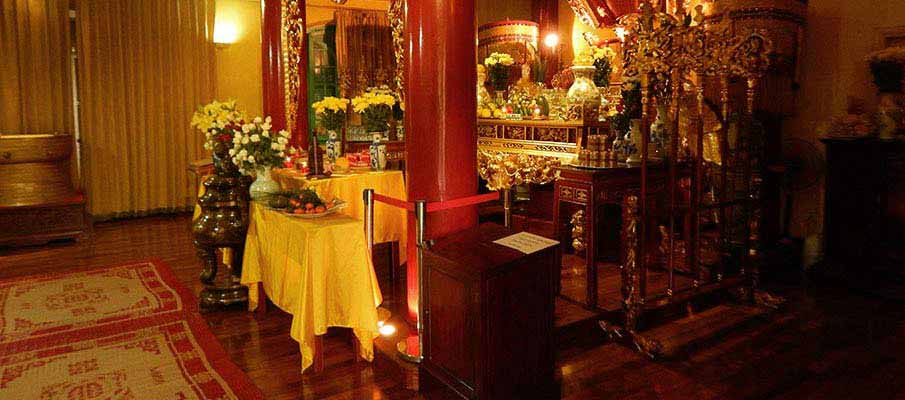
❓ FAQ + TIPS – Imperial Citadel of Thang Long in Hanoi:
1. What is Thang Long Imperial Citadel?
-
- Thang Long Imperial Citadel is a UNESCO World Heritage site located in the heart of Hanoi, Vietnam. It was the political and cultural center of the country for over a millennium, serving as the capital of the Ly, Tran, and Le dynasties.
2. How old is Thang Long Imperial Citadel?
-
- The Thang Long Imperial Citadel dates back over a thousand years, with its origins dating to the 7th century during the Chinese Tang dynasty. The citadel has undergone numerous renovations and expansions over the centuries, with its most significant transformation taking place during the Ly dynasty in the 11th century.
3. What can visitors see at Thang Long Imperial Citadel?
-
- Visitors to Thang Long Imperial Citadel can see a range of historical buildings, temples, gardens, and artifacts. Some of the most prominent structures include the Hanoi Flag Tower, Doan Mon Gate, Kinh Thien Palace, and the Hau Lau Palace. There are also many exhibitions and displays showcasing the cultural heritage of Vietnam.
4. How much time should I spend at Thang Long Imperial Citadel?
-
- It is recommended to allocate at least 2-3 hours to explore Thang Long Imperial Citadel fully. The site is extensive, and visitors can easily spend an entire day exploring the various buildings and exhibits.
5. Is there a fee to enter Thang Long Imperial Citadel?
-
- Yes, there is an entrance fee to visit Thang Long Imperial Citadel. The fee is 30,000 VND (approximately 1.5 USD) for adults and 15,000 VND (approximately 0.75 USD) for children under 15 years old. Entry is free for children under six years old.
6. Can I take photos at Thang Long Imperial Citadel?
-
- Yes, visitors are allowed to take photos at Thang Long Imperial Citadel. However, visitors must respect the cultural significance of the site and not touch or remove any artifacts or displays.
7. Is there a dress code for visiting Thang Long Imperial Citadel?
-
- There is no specific dress code for visiting Thang Long Imperial Citadel. However, visitors are recommended to wear comfortable clothing and shoes as there is a fair amount of walking involved.
8. Are guided tours available at Thang Long Imperial Citadel?
-
- Yes, guided tours are available at Thang Long Imperial Citadel. The tours are conducted in English and Vietnamese and are led by knowledgeable guides who provide in-depth information about the site’s history and architecture.
9. What is the best time of day to visit Thang Long Imperial Citadel?
-
- The best time to visit Thang Long Imperial Citadel is in the morning or late afternoon when the weather is cooler. Visiting during these times also allows for better photo opportunities as there are fewer crowds.
10. Is Thang Long Imperial Citadel accessible for people with disabilities?
-
- Thang Long Imperial Citadel is partially accessible for people with disabilities. While there are some ramps and accessible areas, many of the buildings have stairs and uneven surfaces, which may pose a challenge. Visitors with disabilities are recommended to check with the site’s management in advance for more information.
11. Can visitors bring food and drinks into Thang Long Imperial Citadel?
-
- No, visitors are not allowed to bring food and drinks into Thang Long Imperial Citadel. However, there are food and beverage vendors available outside the site’s entrance.
12. Is there a parking lot at Thang Long Imperial Citadel?
-
- Yes, there is a parking lot available for visitors at Thang Long Imperial Citadel. However, the lot can become crowded during peak hours, so visitors are recommended to arrive early.
13. Are there any special events or festivals held at Thang Long Imperial Citadel?
-
- Yes, Thang Long Imperial Citadel hosts several cultural events and festivals throughout the year, including the Lunar New Year Festival, the Mid-Autumn Festival, and the National Day Celebration. These events offer visitors a chance to experience the local culture and traditions firsthand.
BOOK a TOUR / TICKETS in Hanoi ➜
| Thang Long Citadel: A Treasure Trove of History | Description |
|---|---|
| 1. Ancient Capital of Vietnam: |
The Thang Long Citadel is a historical treasure that served as the political and cultural heart of Vietnam for over a thousand years. It was the capital of various Vietnamese dynasties, making it a living museum of the nation’s history and a UNESCO World Heritage site. |
| 2. Multiple Layers of History: |
The citadel’s historical significance lies in its multiple layers of history. It was built by the Ly dynasty in 1010, expanded and renovated by succeeding dynasties, including the Tran, Le, and Nguyen. Each dynasty left its mark, creating a complex that showcases the evolution of Vietnamese architecture and culture. |
| 3. Imperial City: |
The Thang Long Citadel was home to the Vietnamese imperial court. It included the Forbidden City, the royal palaces, and administrative buildings. The grandeur of the Imperial City is a testament to the power and prestige of Vietnam’s monarchs throughout history. |
| 4. Symbol of Independence: |
The name „Thang Long“ translates to „Ascending Dragon,“ symbolizing Vietnam’s resistance and independence against foreign invaders. The citadel played a pivotal role in the defense of the nation, withstanding numerous conflicts and foreign occupations. |
| 5. Unique Architectural Features: |
The Thang Long Citadel boasts unique architectural features, including the Hanoi Flag Tower and the Doan Mon Gate. The citadel’s layout, inspired by the Chinese model, reflects the harmony between nature and human intervention. Its design incorporates the principles of feng shui and geomancy. |
| 6. Time Capsule of Art and Culture: |
The citadel houses numerous cultural and artistic treasures. These include sculptures, paintings, and artifacts that offer insights into the lifestyles, beliefs, and artistic accomplishments of various Vietnamese dynasties. The citadel is a living time capsule of Vietnam’s rich cultural heritage. |
| 7. Archaeological Discoveries: |
Excavations within the Thang Long Citadel have led to remarkable archaeological discoveries. These findings provide invaluable historical information about the daily lives, rituals, and architecture of the different dynasties that resided within the citadel’s walls. |
| 8. Modern-Day Cultural Center: |
Today, the Thang Long Citadel is not just a historical relic but also a vibrant cultural center. It hosts events, exhibitions, and traditional performances, allowing visitors to immerse themselves in Vietnam’s living heritage. It serves as a testament to the enduring importance of history in the present day. |
| 9. UNESCO Recognition: |
In 2010, UNESCO recognized the Thang Long Citadel as a World Heritage Site. This acknowledgment highlights its cultural and historical significance on a global scale, preserving its heritage for future generations and promoting international awareness of Vietnam’s history. |
| 10. Ongoing Conservation Efforts: |
Preservation efforts continue to safeguard the Thang Long Citadel’s legacy. These efforts include restoration of architectural elements, ongoing excavations, and educational programs to ensure that this remarkable site remains a living symbol of Vietnam’s enduring history and culture. |

